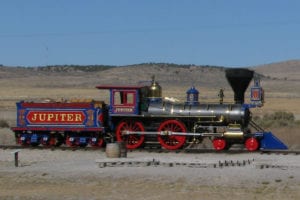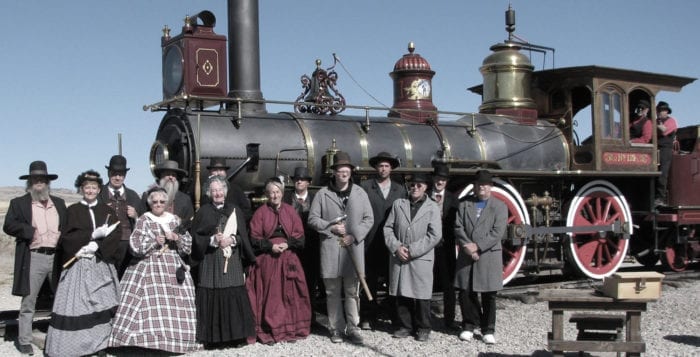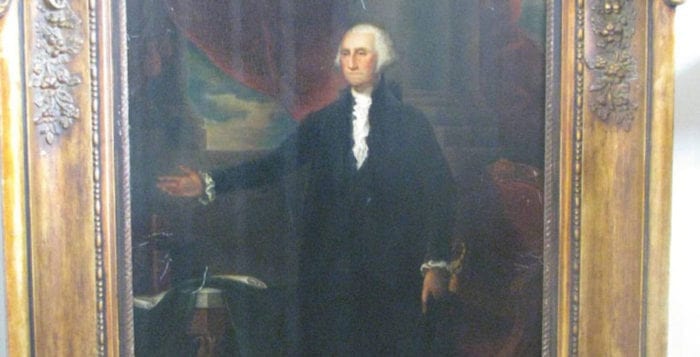By Beverly C. Tyler
The changes in transportation that began in the early 1800s were dramatic and far-reaching. They made it possible to lower costs of food and fuel, expand settlements, open western New York and the Midwest, and provide employment for thousands of immigrants. Before steam power, transportation on land was limited to walking, riding horses and going by horse and wagon. Canals and steamboats made long distance transportation viable, but canals were a temporary solution. The railroads became the vehicle that united America with steam power.
Wood was the first fuel used by steam trains, but coal was the fuel that made commerce by rail a reality. The early trains, including the Long Island Rail Road, fueled with wood, were only strong enough to carry passengers. Before 1844 the Norwich & Worcester and Boston & Worcester railroads ran a water-to-rail route from Manhattan to Boston. Steamboats left Manhattan at 5 p.m. Eleven hours later, they arrived at Allyn’s Point in Norwich, Connecticut. There the passengers were escorted to the waiting train. Two hours later they arrived in Boston, a total trip of 13 hours, under the best of conditions.
To compete on the route from Manhattan to Boston the LIRR built a rail line west to east on Long Island from Brooklyn to Greenport. Cornelius Vanderbilt joined with the LIRR to provide steamboats for crossing Long Island Sound, between Greenport and the docks at Stonington and Norwich, Connecticut, where trains then took passengers to Boston. The LIRR felt that as this was the longest rail route and the shortest water crossing it would get passengers to and from Boston more rapidly, and it did, with a time of about 10-and-a-half hours. The first train left Brooklyn Aug. 8, 1844. The route was initially a popular success and even had a contract to carry the U.S. mail. The new LIRR and N&W route offered early morning departures which assured arrival in one’s destination city by evening. Thus, for the first time, travelers passing between the two cities could avoid having to spend a night on the steamboat/train connection.
Vanderbilt in his quest against his competitors kept lowering the cost of the LIRR route, and when the board of directors balked at his aggressive stance, Vanderbilt abandoned the LIRR, making it impossible to compete financially. To get needed funds the railroad sold their steamboats Cleopatra and Worcester to the N&W allowing it to compete with LIRR on its own water routes. As a result, the LIRR abandoned its Brooklyn to Boston route in March 1847.

The LIRR now had tracks running through the center of the Island where few people lived. It would be nearly three decades before the railroad completed lines along the North and South shores to more effectively serve Long Island residents. In the meantime, the LIRR began a campaign to encourage New York City residents to take the rails to the shores of Lake Ronkonkoma as well as connections to stage coaches that would take them to vacation spots on the North and South shores of the Island.
The rise of American railroads coincided with a flood of immigrants. In 1842 more than 100,000 immigrants arrived in American ports, the overwhelming majority in New York City. By 1847, immigrants from just Ireland exceeded 100,000 and over the next decade more than a million Irish came to America. Germans also came to America to escape the wars and revolutions in Europe. As railroads grew and tracks crisscrossed Eastern and Midwest states they needed more and more laborers to lay tracks and do many new jobs associated with this new booming transportation infrastructure. The flood of immigrants had come at just the right time for America.
In Ohio, Illinois, Indiana and Michigan, railroads connected the waterways of the Great Lakes, and the Ohio, Mississippi and other rivers with port cities, especially New York and New Orleans. During the 1850s Midwest cities grew rapidly as immigrants, cattle, hogs and wheat from the great plains flooded into Chicago and other developing Midwest cities.
By the late 1840s, the telegraph and the railroads were developing together and relying on each other. The possibility of instantaneous information altered the entire logistics of the railroad industry. For the telegraph operators, the benefits were obvious. The telegraph company would hoist its poles along the tracks. The railroad would then provide ongoing maintenance of the telegraph wires.
In the summer of 1862, the federal government, in the absence of Southern elements in Congress due to the Civil War, approved the Pacific Railway Act, with a combination of land grants and bond guarantees, allowed for private interest to begin construction of a railroad to connect across the entire country. It was the California Gold Rush that made the construction work possible and men such as John D. Rockefeller, Andrew Carnegie, J.P. Morgan and Joseph Pulitzer made it work.
From the time of the gold rush in 1848 to 1849 the idea of connecting the Pacific Coast to the East via a large railroad had been a dream of both capitalists and politicians. Finally in 1869, the golden spike was driven in the last rail as west met east at Promontory, Utah, where the two trains met, the western train fueled by wood and the eastern train fueled by coal.
In October 2012 my wife Barbara and I dove to the Golden Spike National Historic Site in Corinne, Utah. It is really a desolate area except for the national park. We were there for the last ceremonial reenactment of the year, the joining of the rails across America at Promontory, Utah.
Two reproduction engines, the Central Pacific engine Jupiter and the Union Pacific engine 119 came together as the golden spike was gently driven in and then removed and replaced with an iron spike. Costumed actors and visitors then gathered together for a picture of this monumental event that joined our country together with steel rails and instant communication.
Beverly C. Tyler is Three Village Historical Society historian and author of books available from the society at 93 North Country Road, Setauket. For more information, call 631-751-3730 or visit www.tvhs.org.






